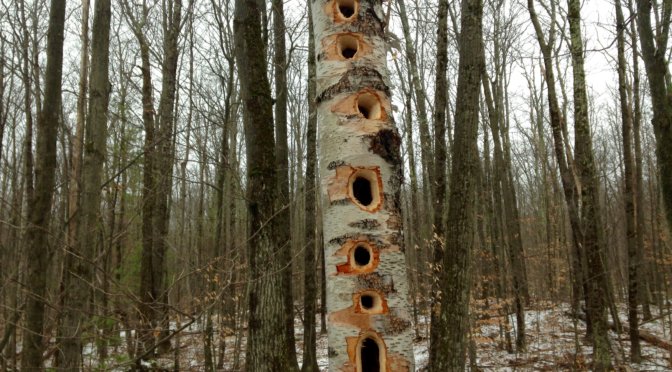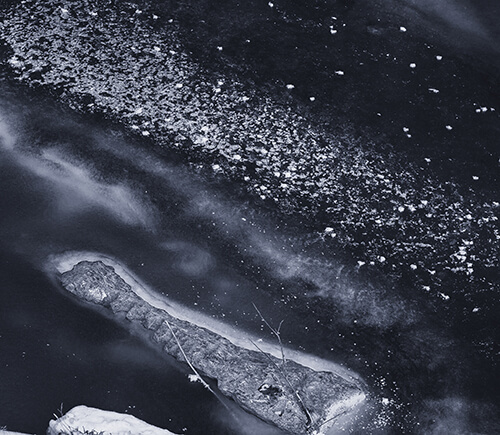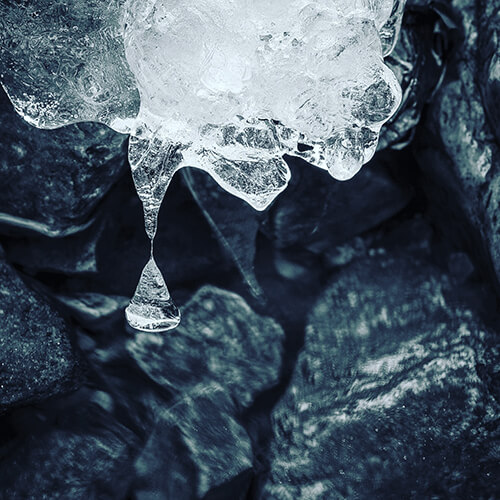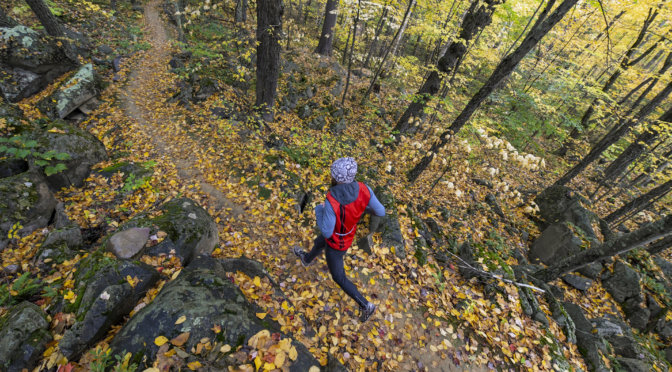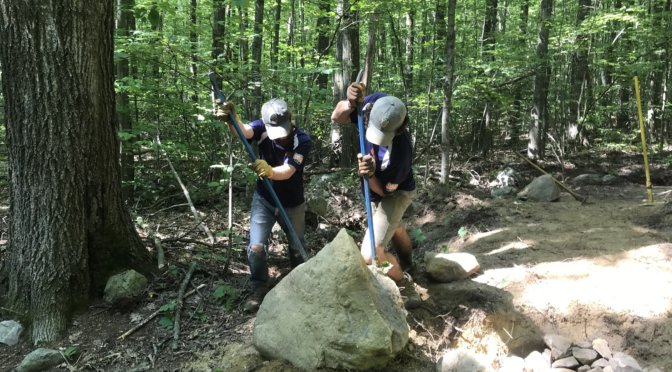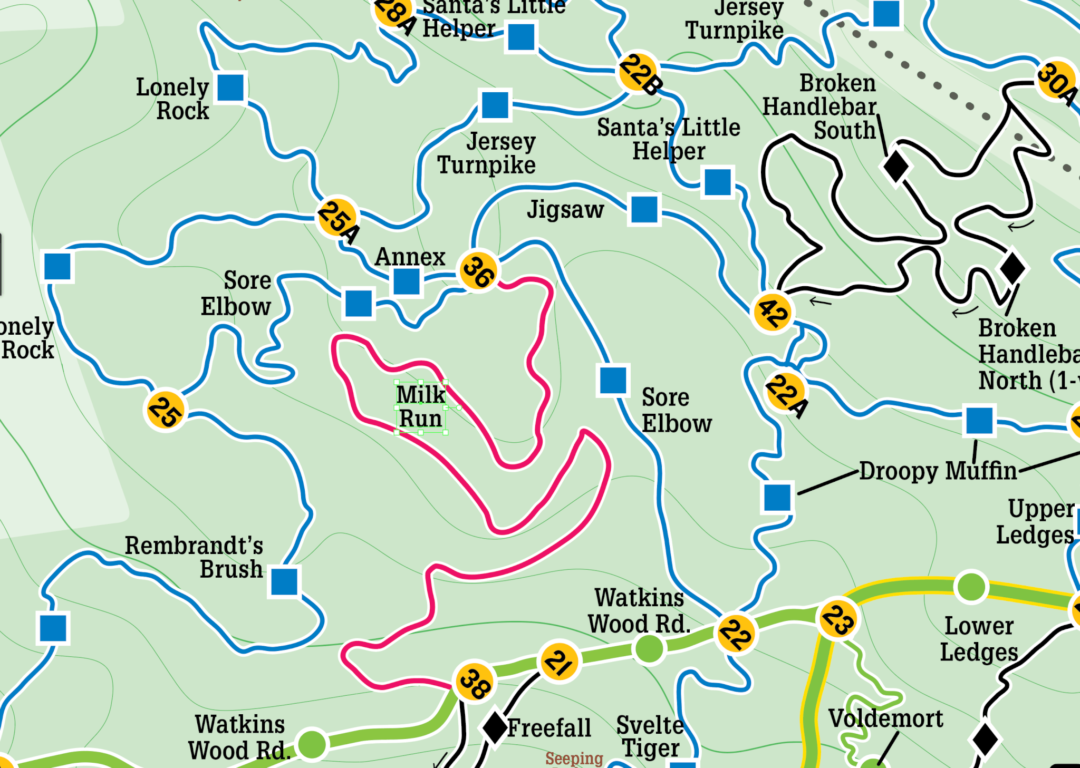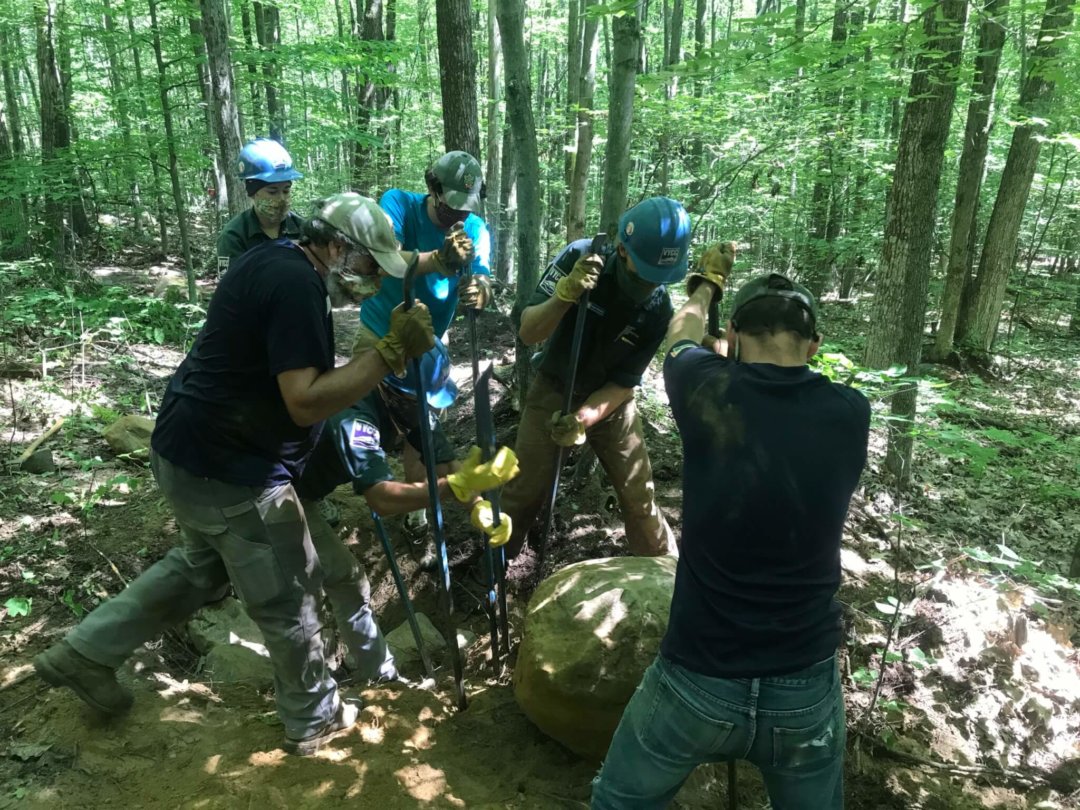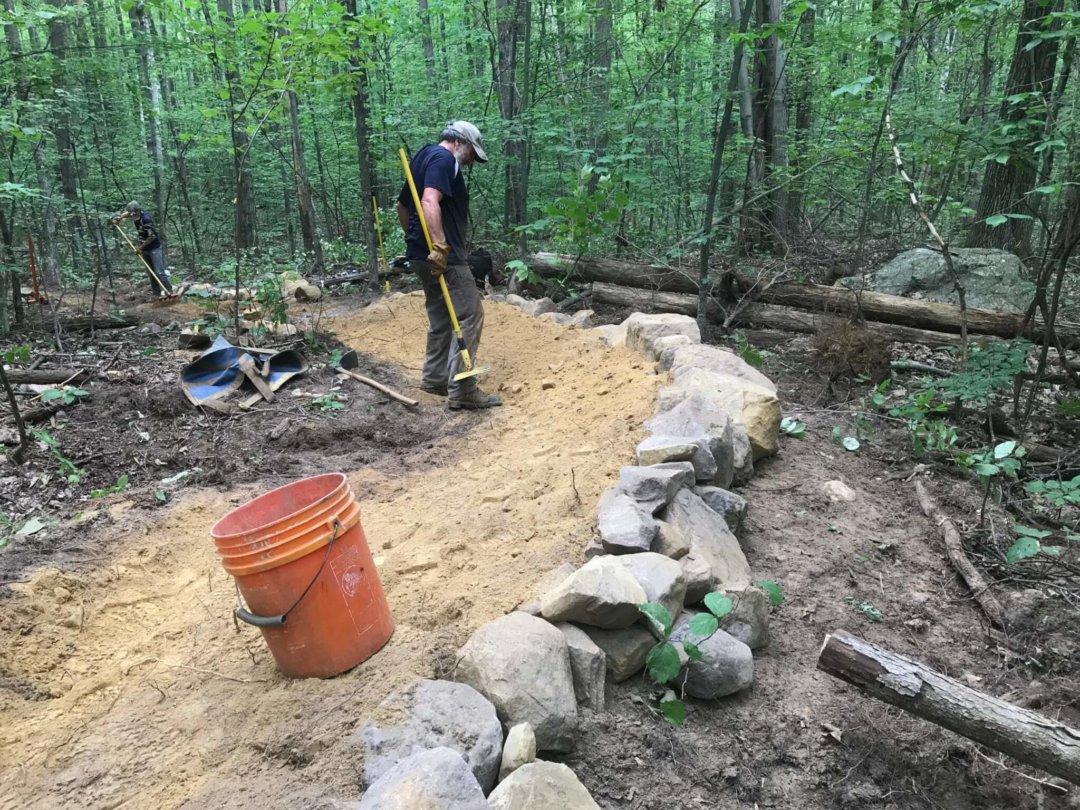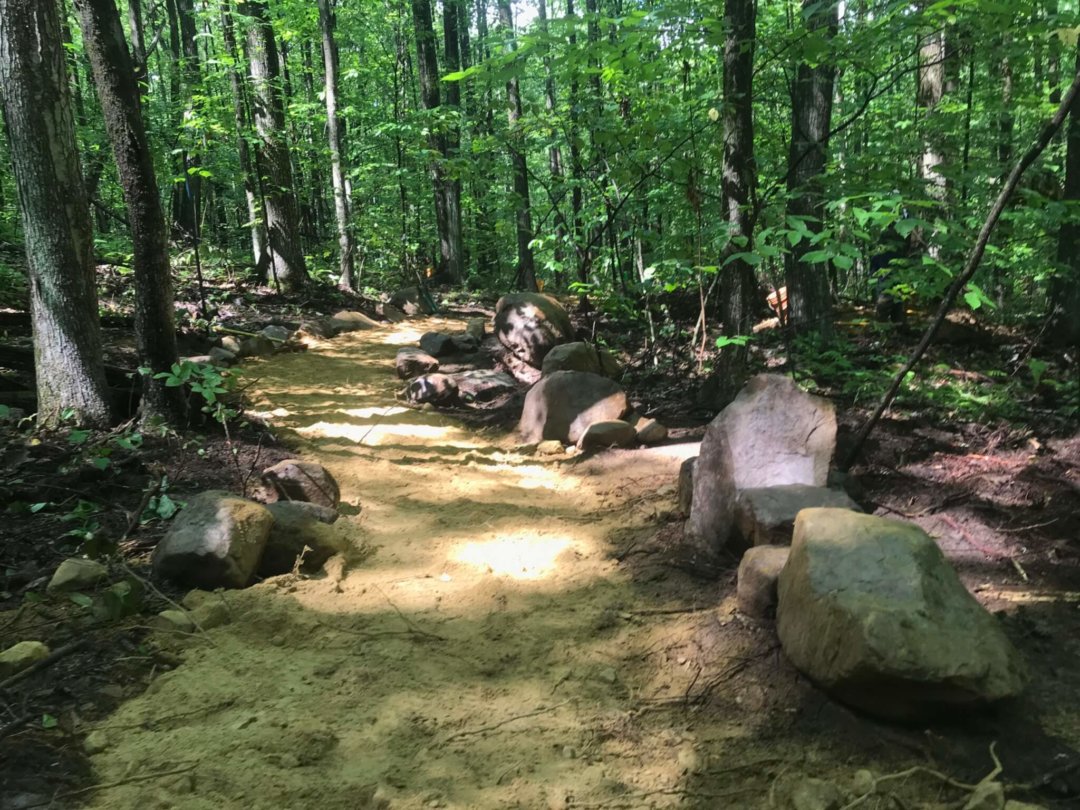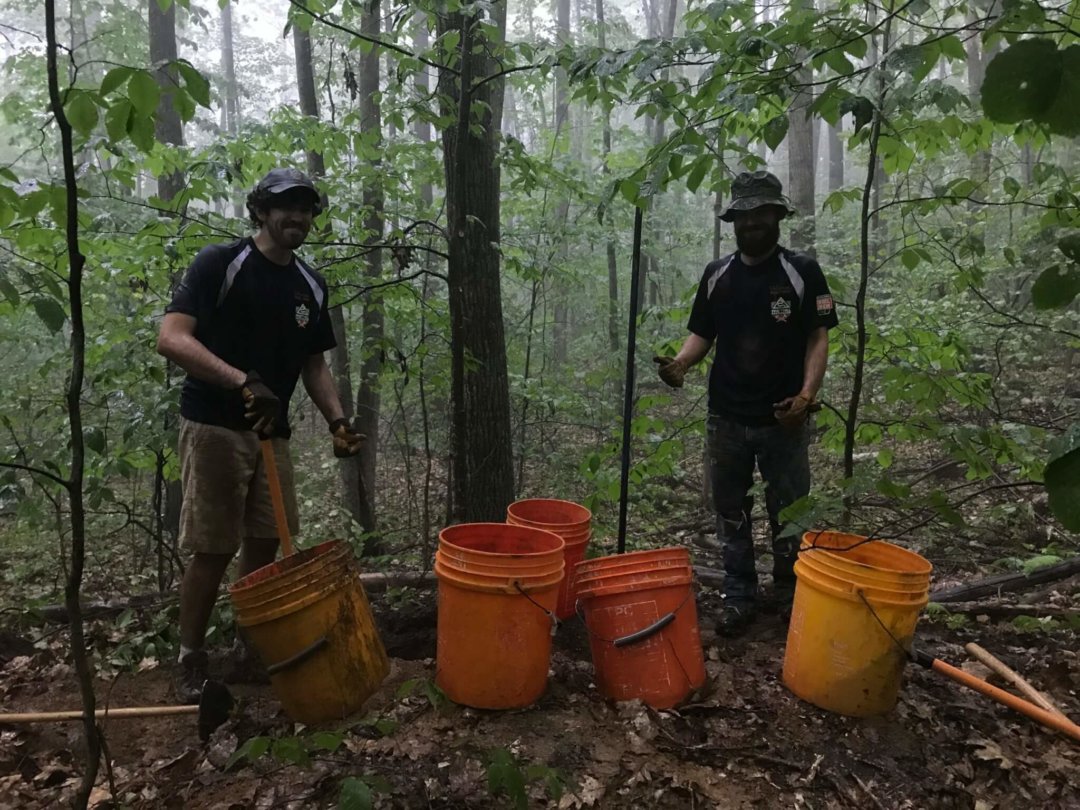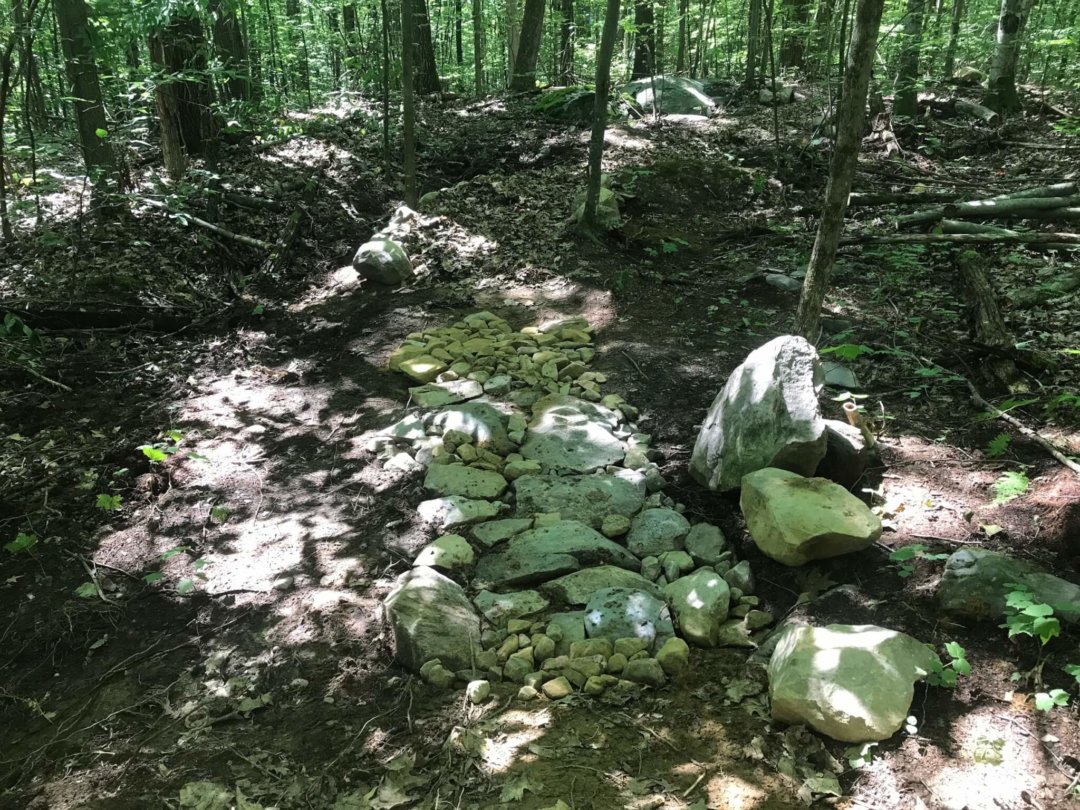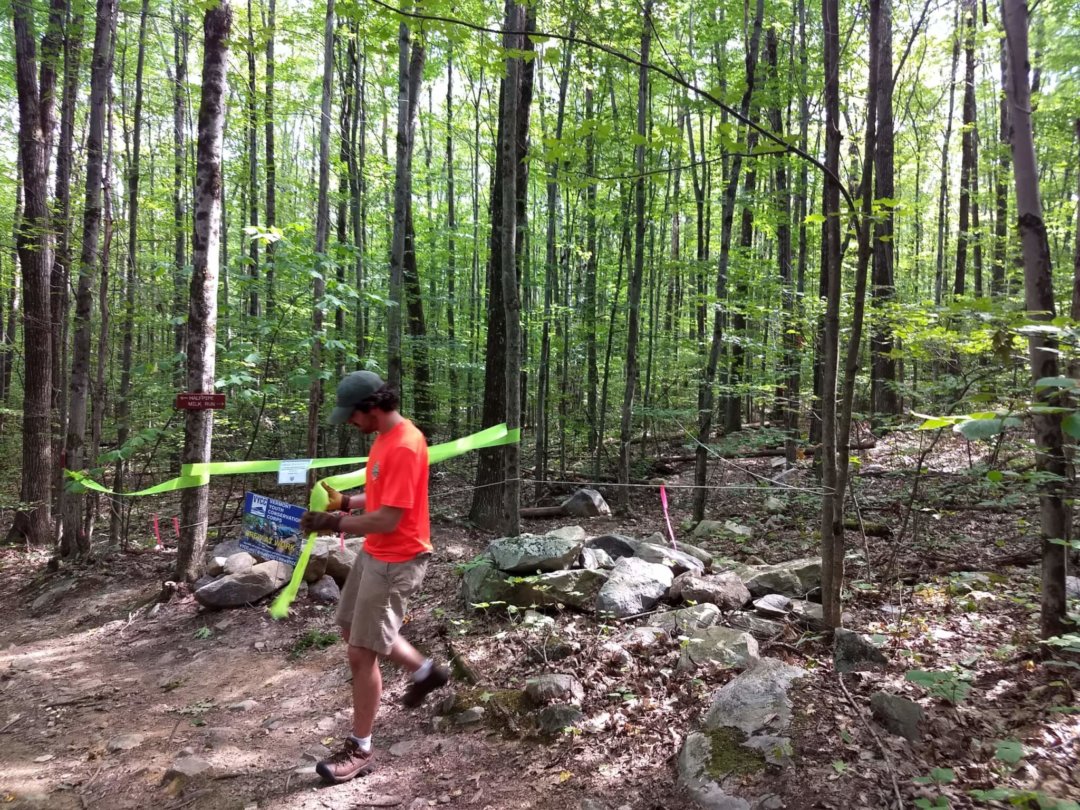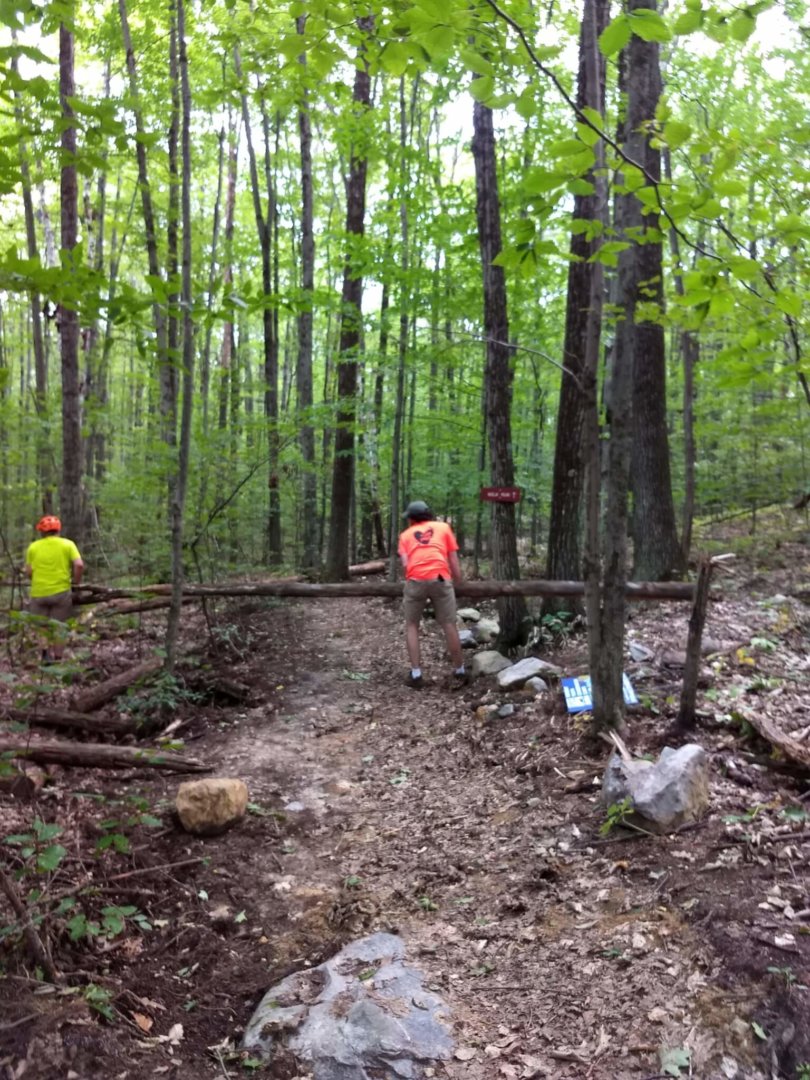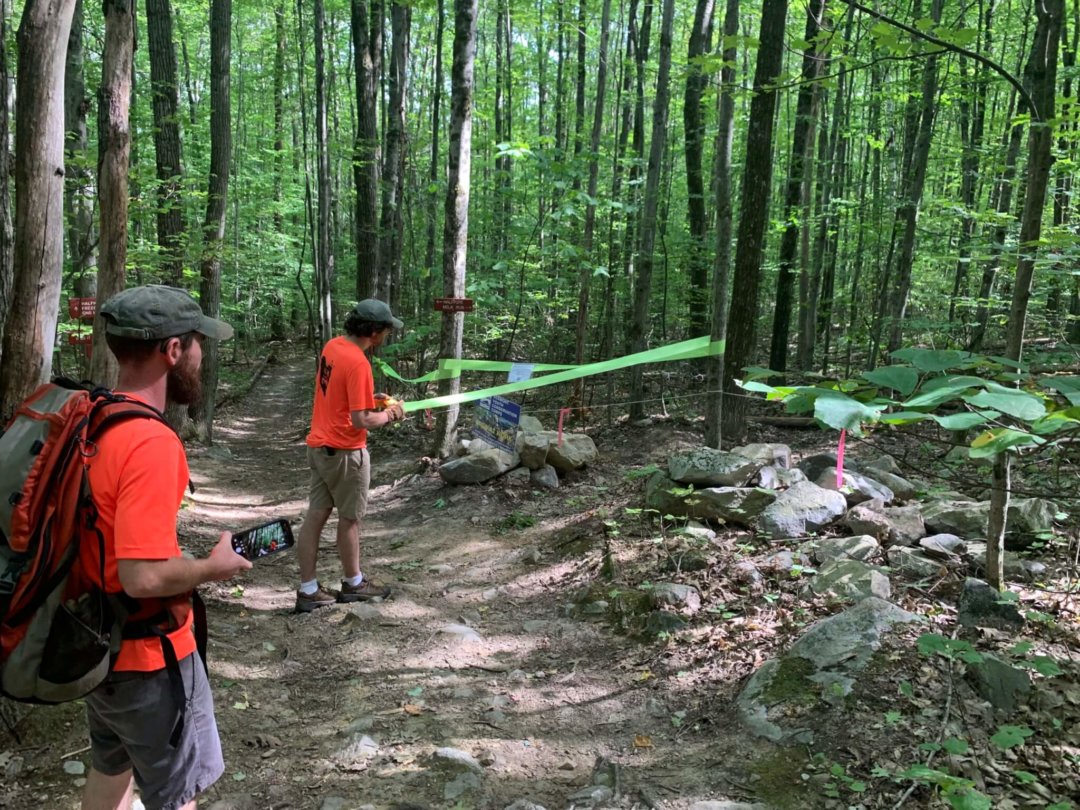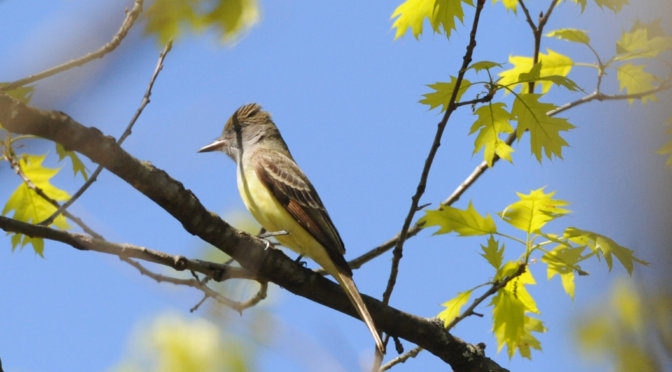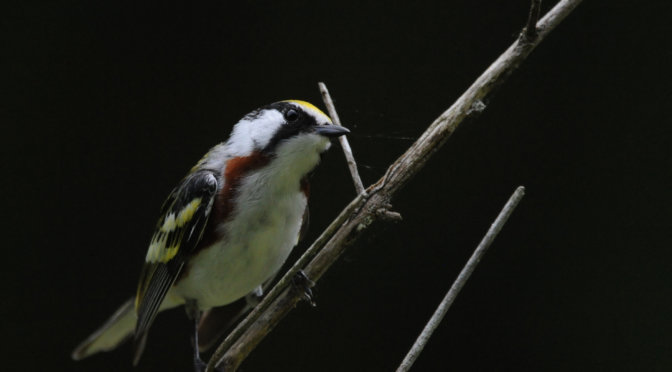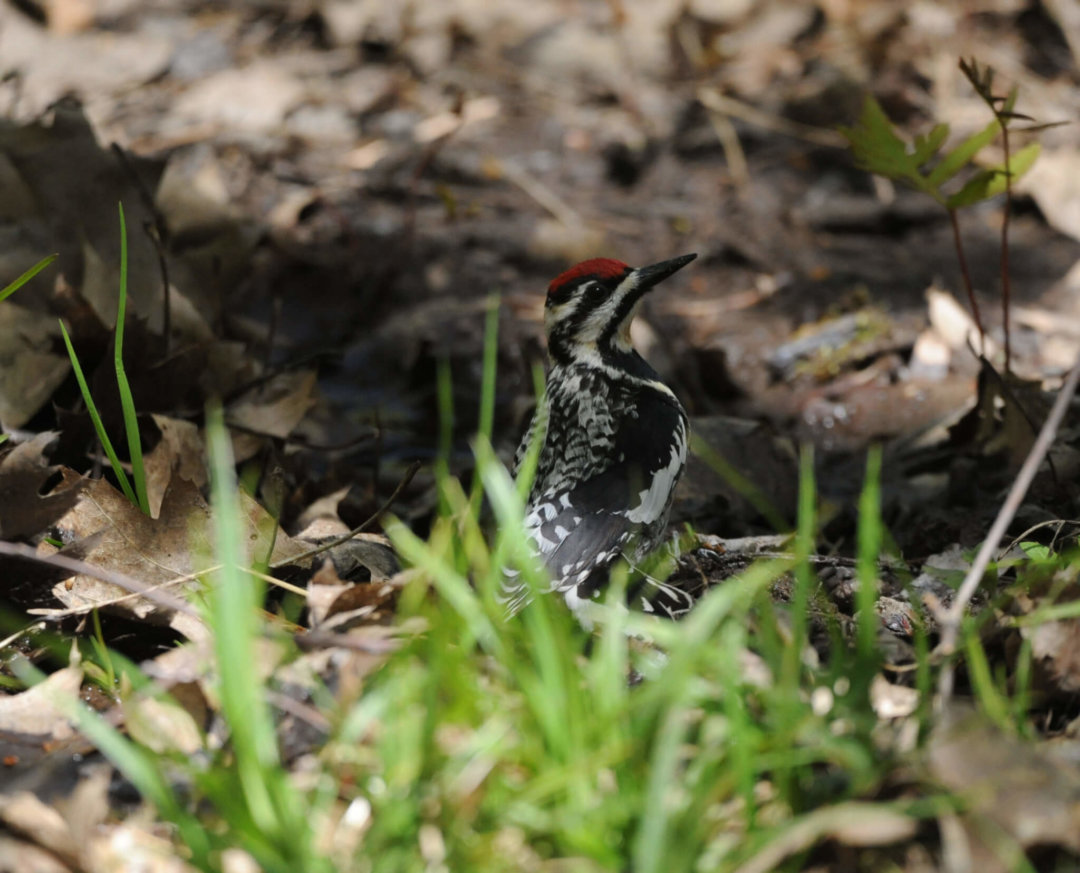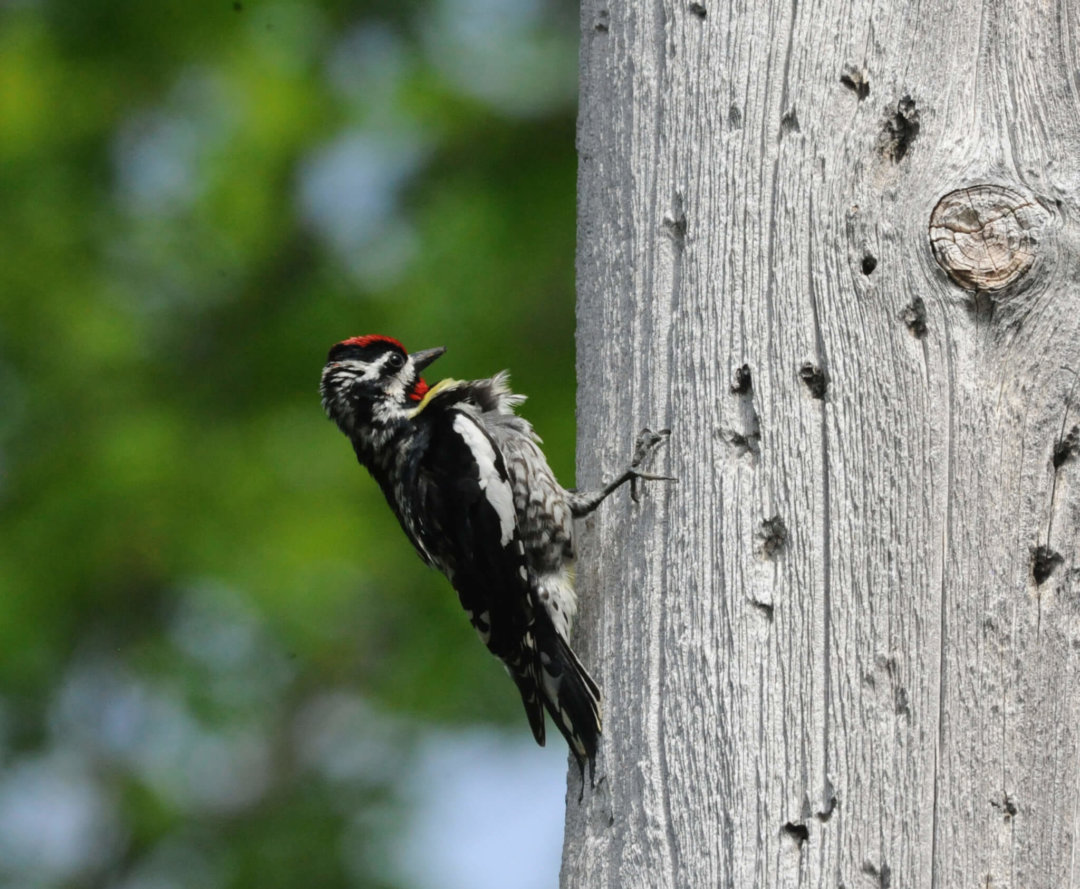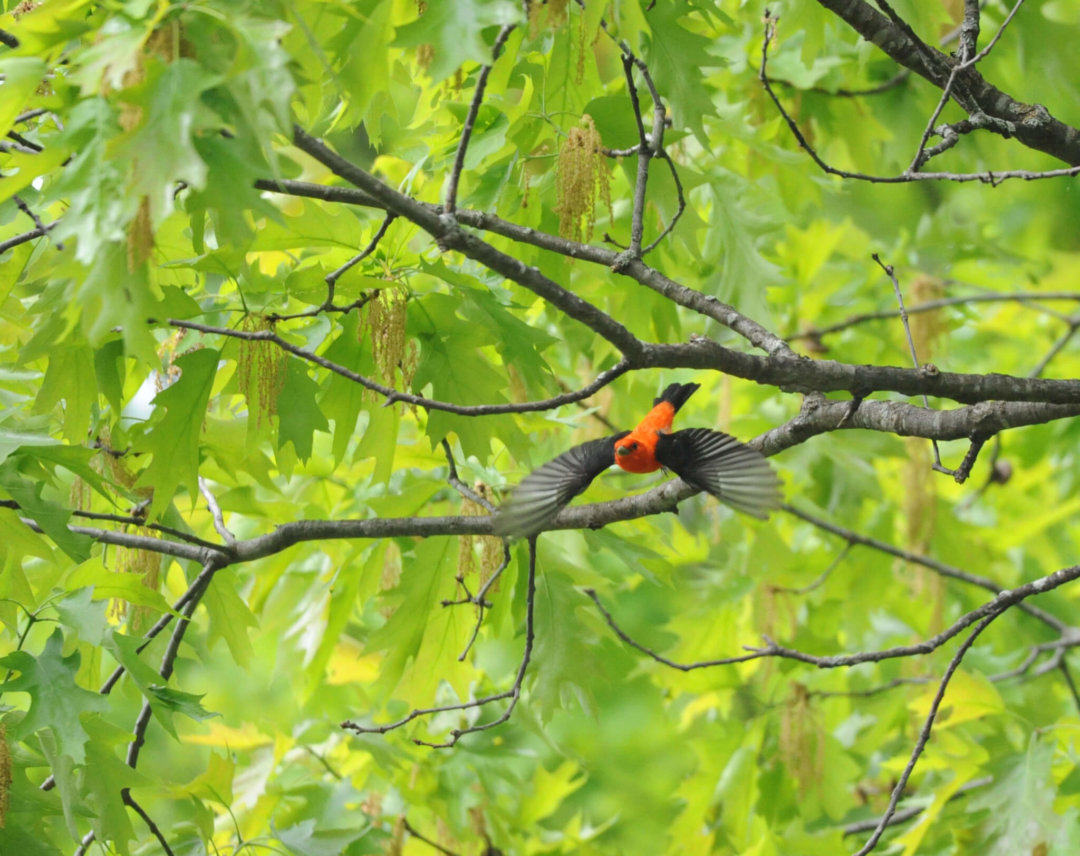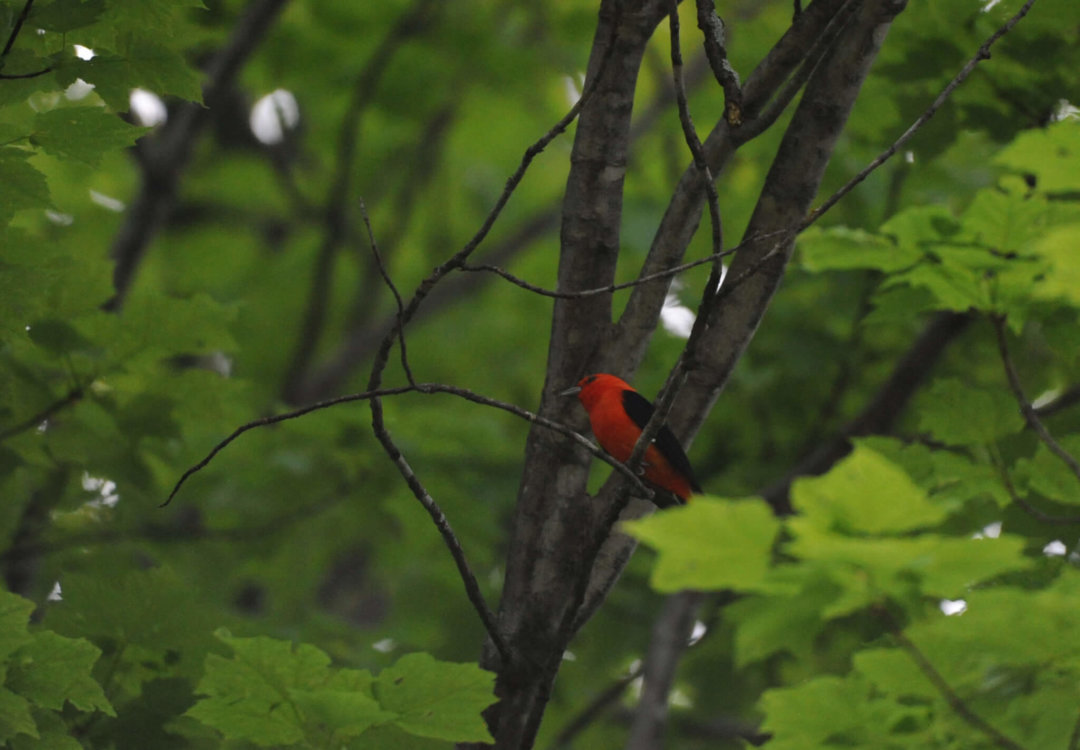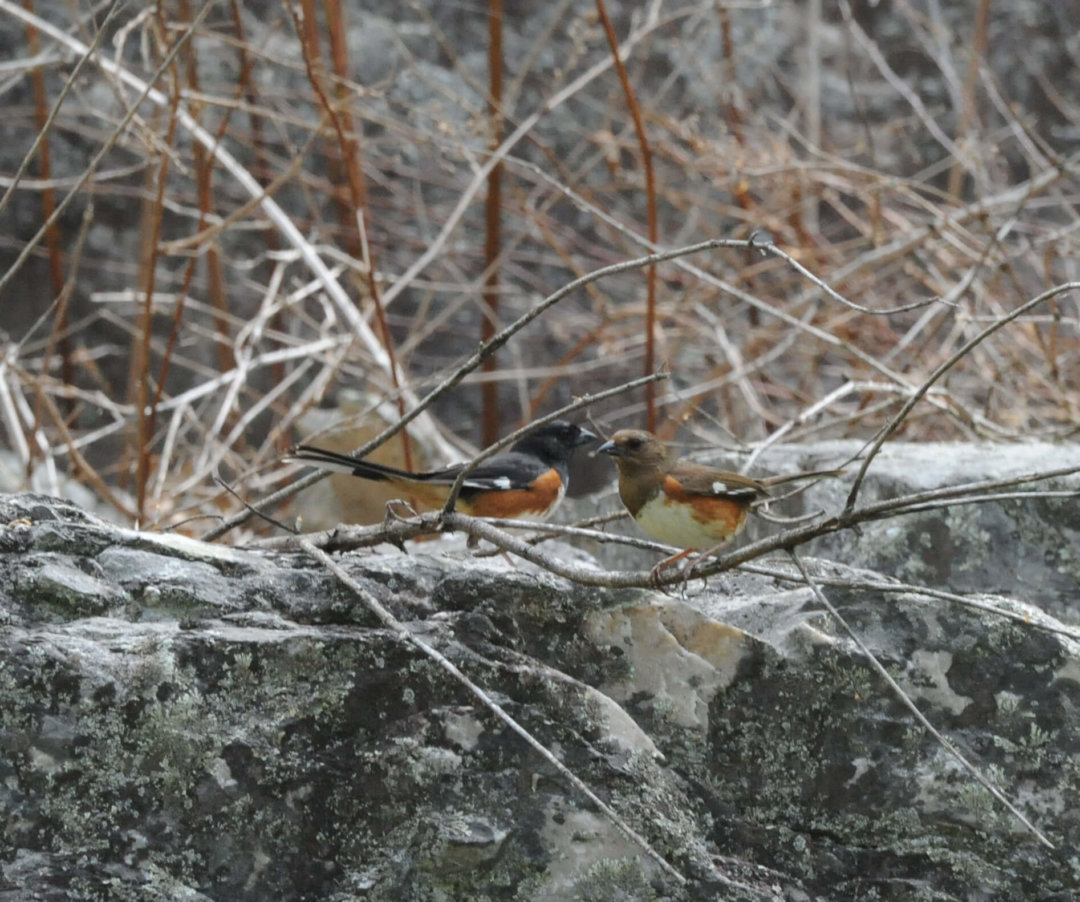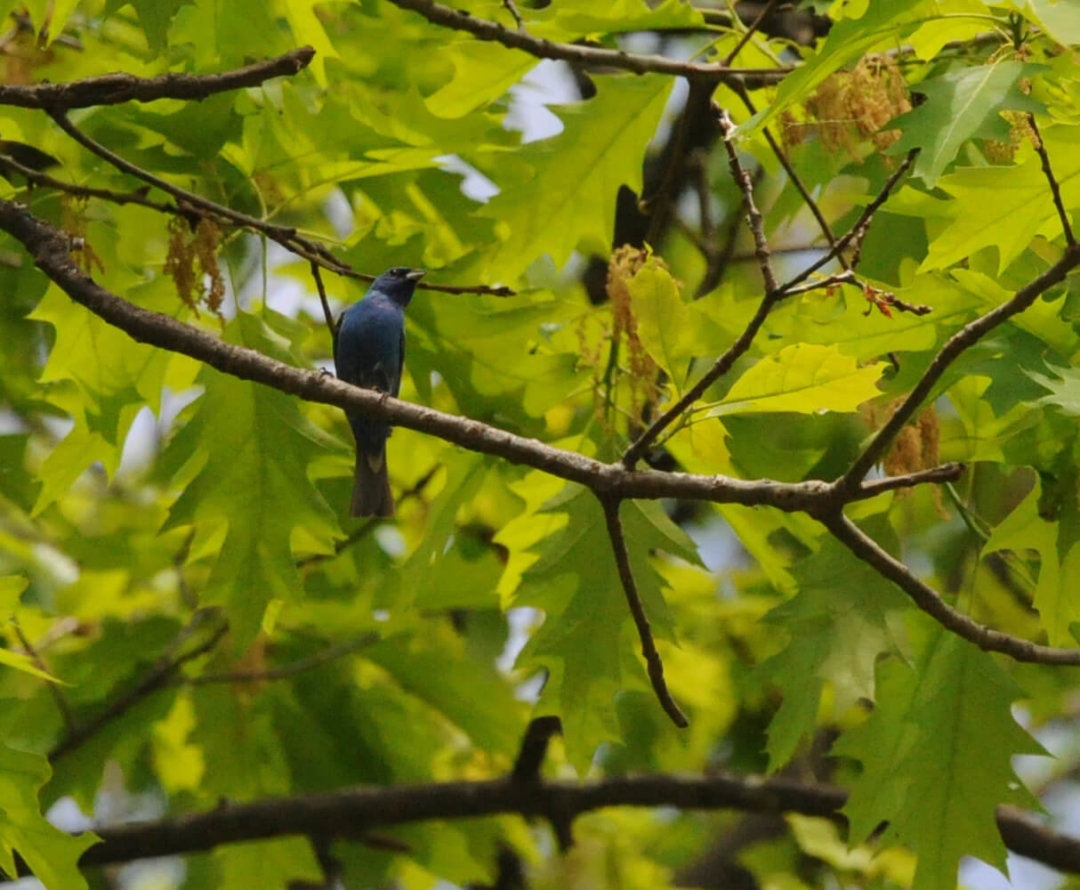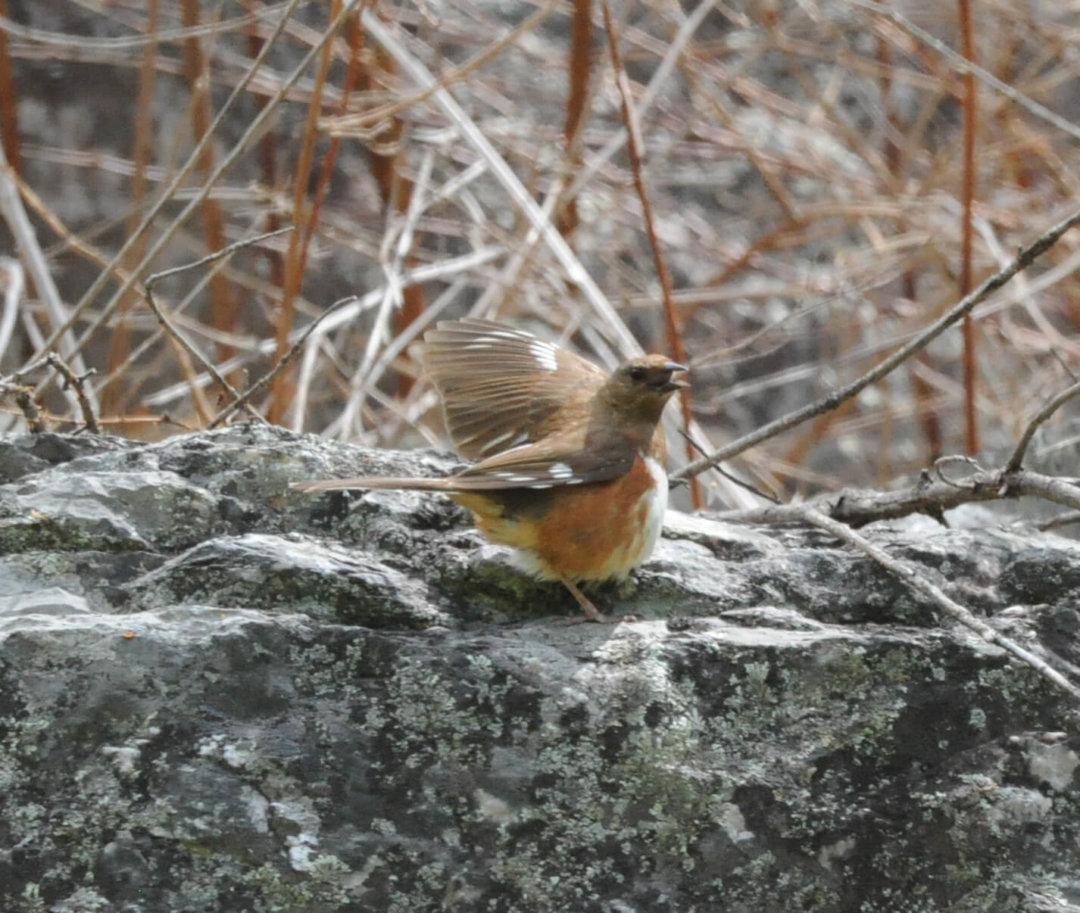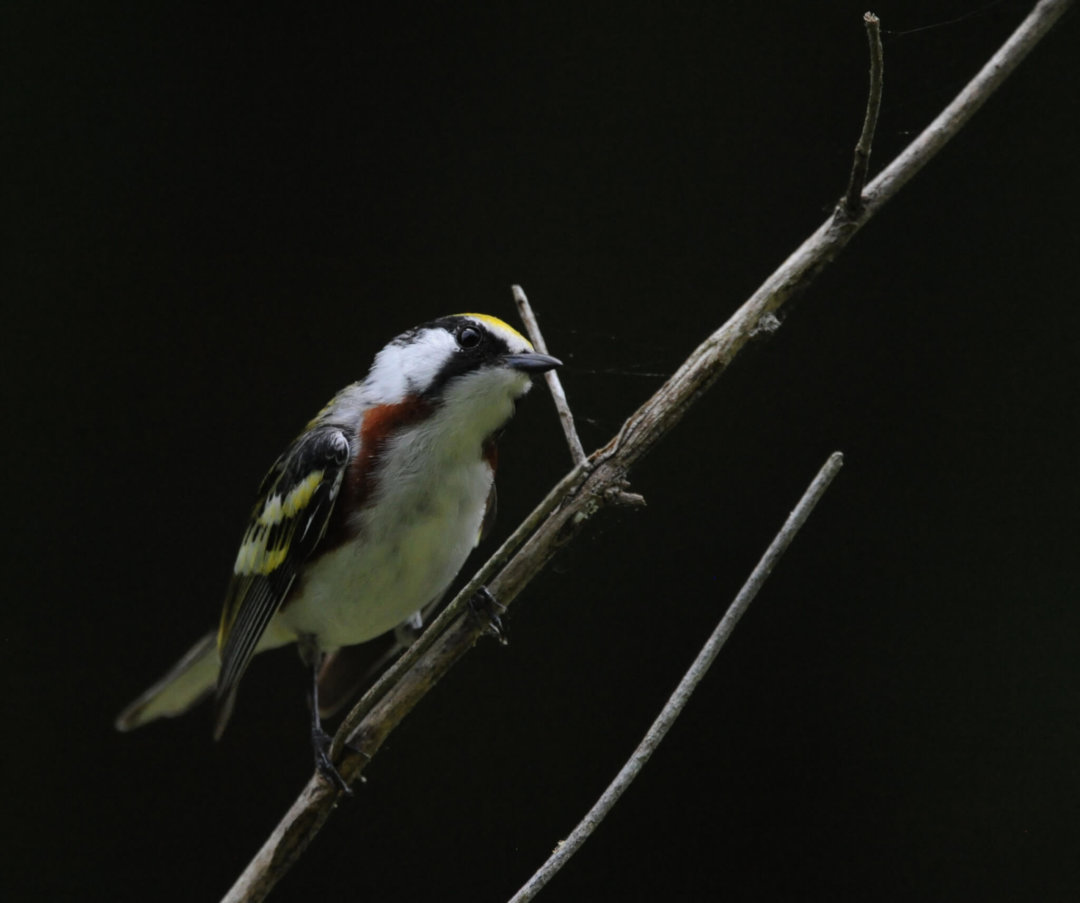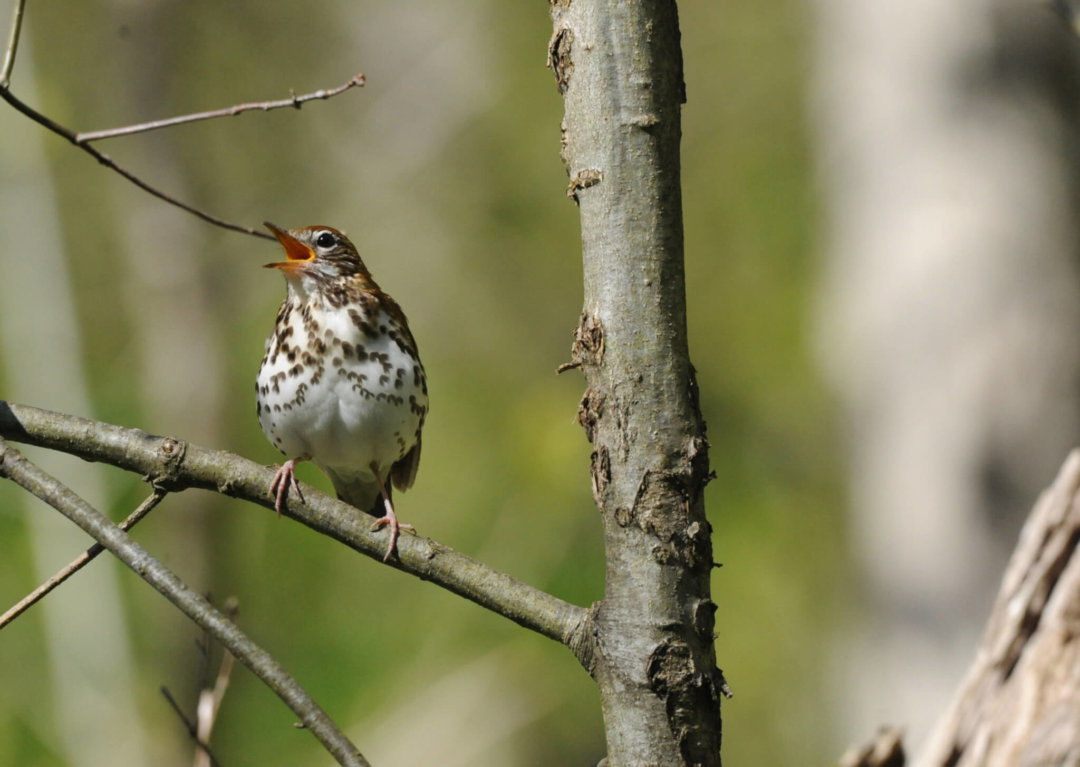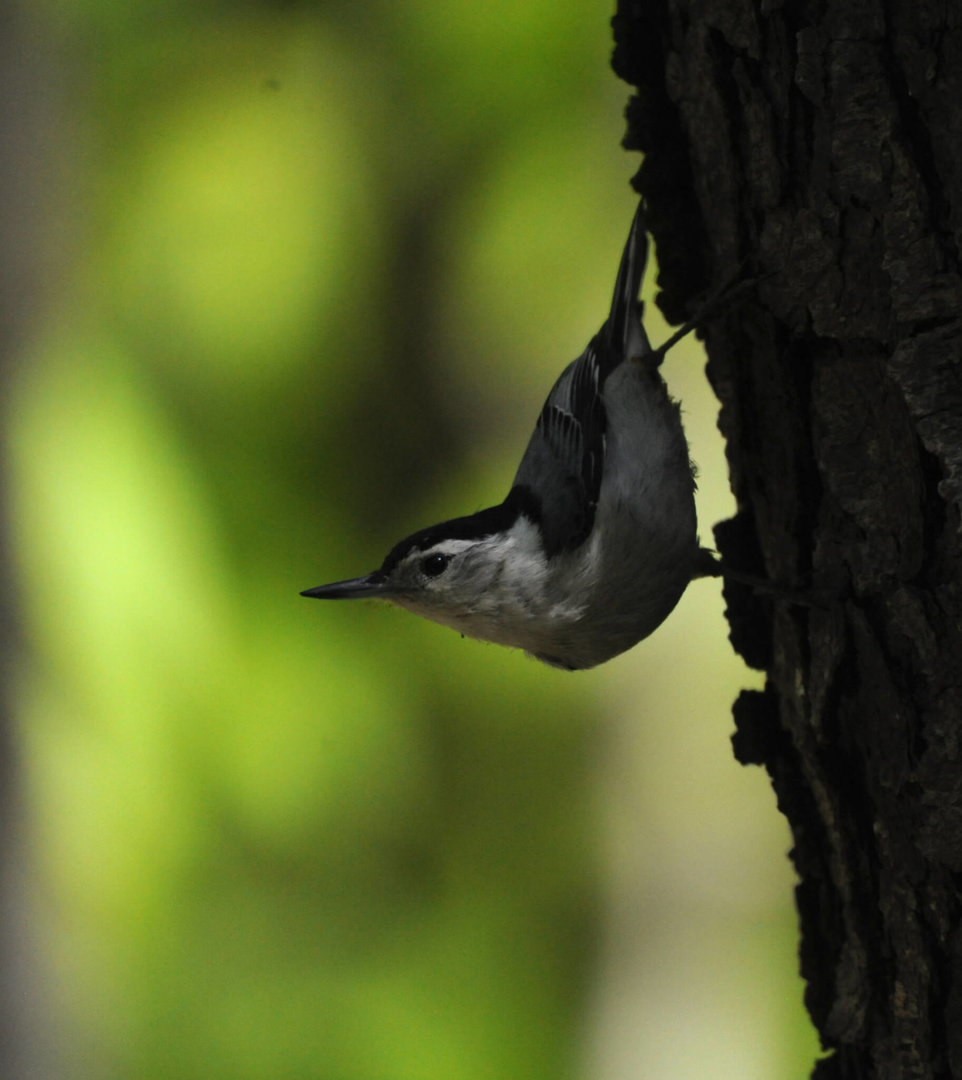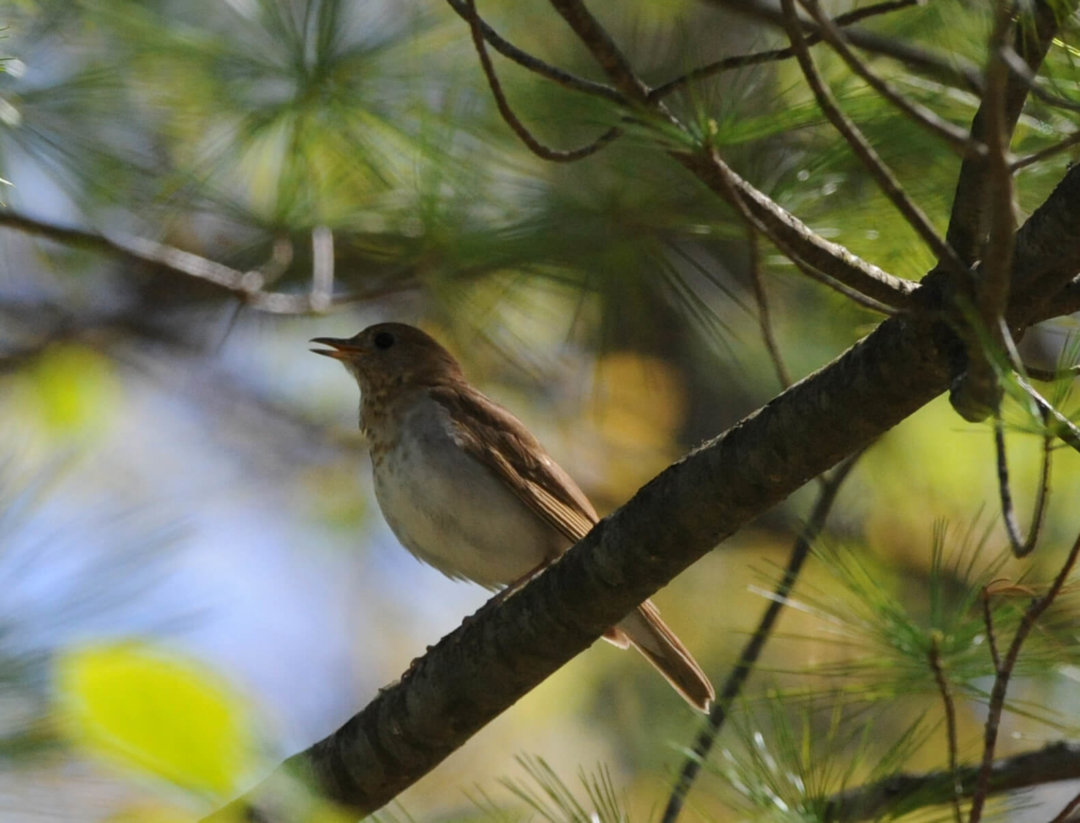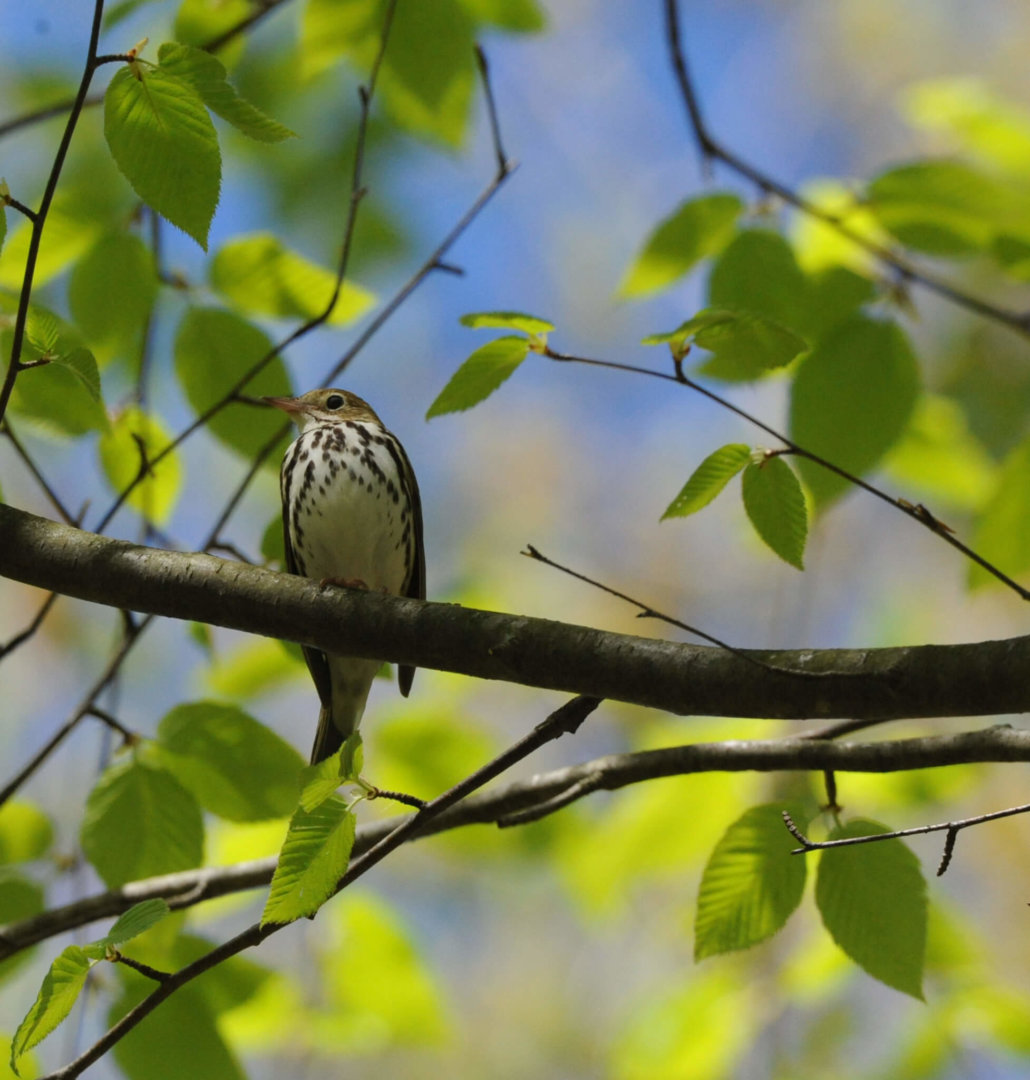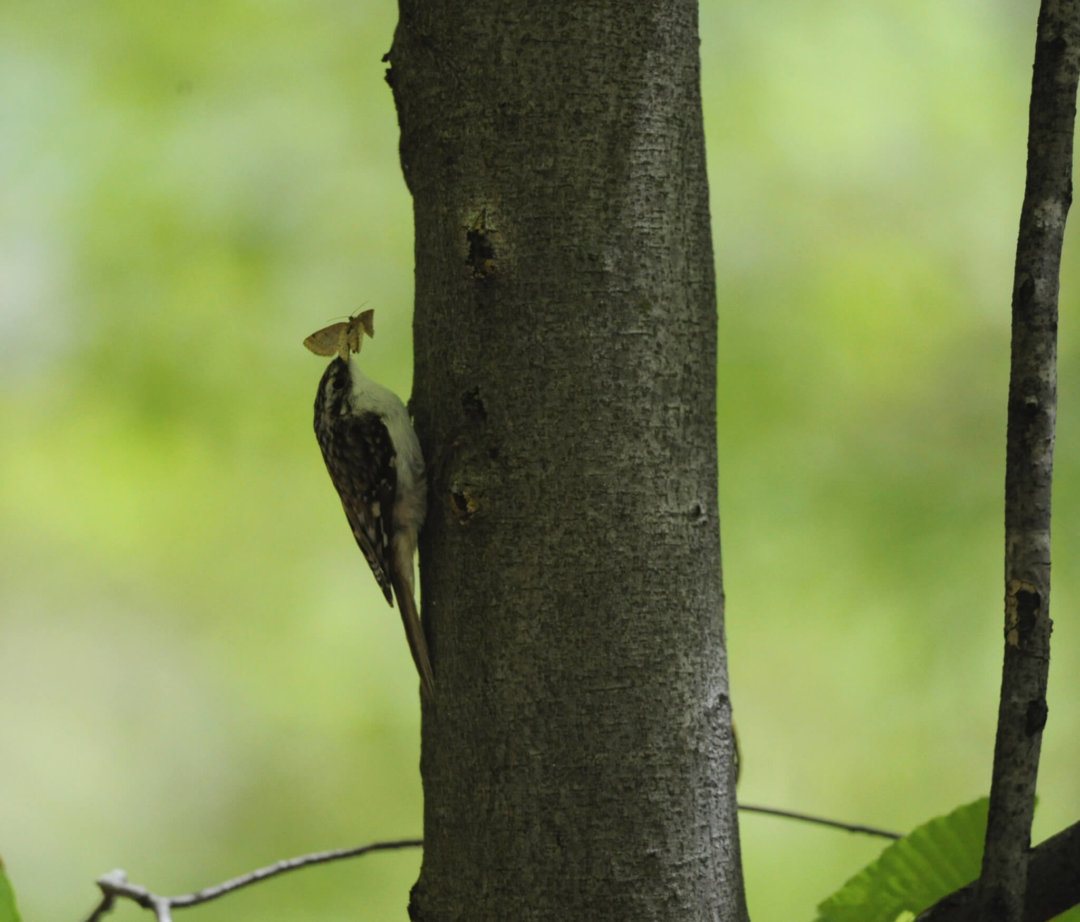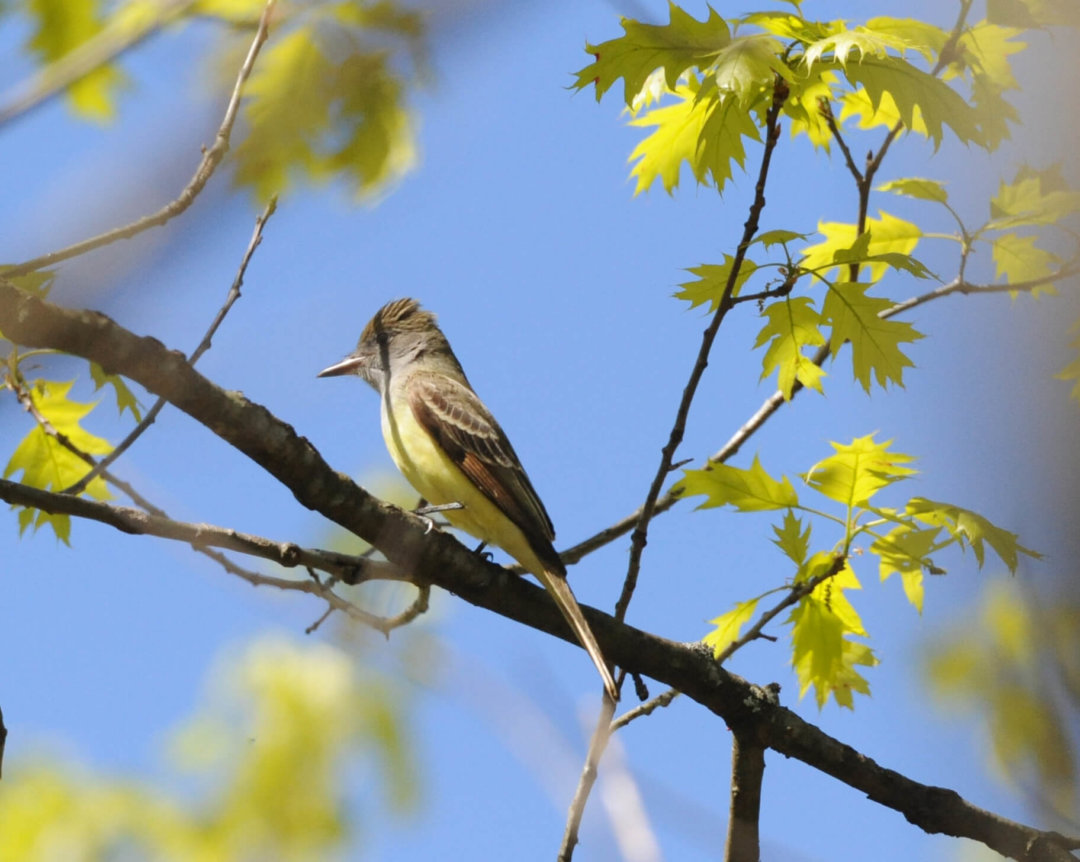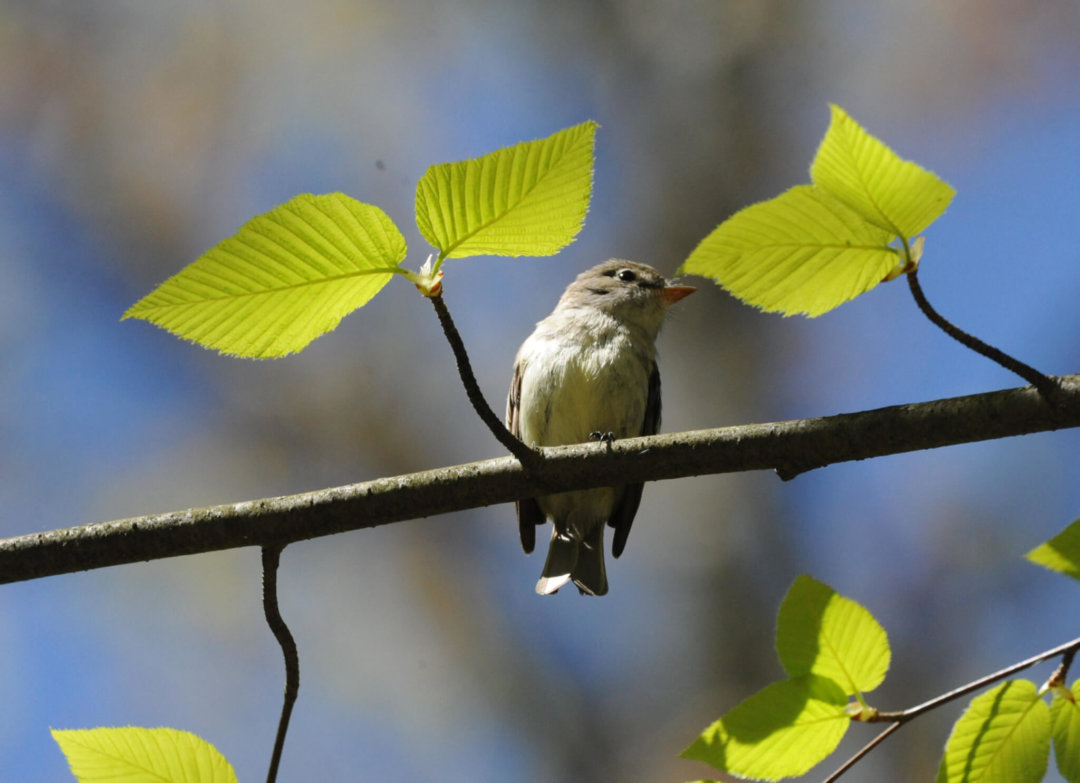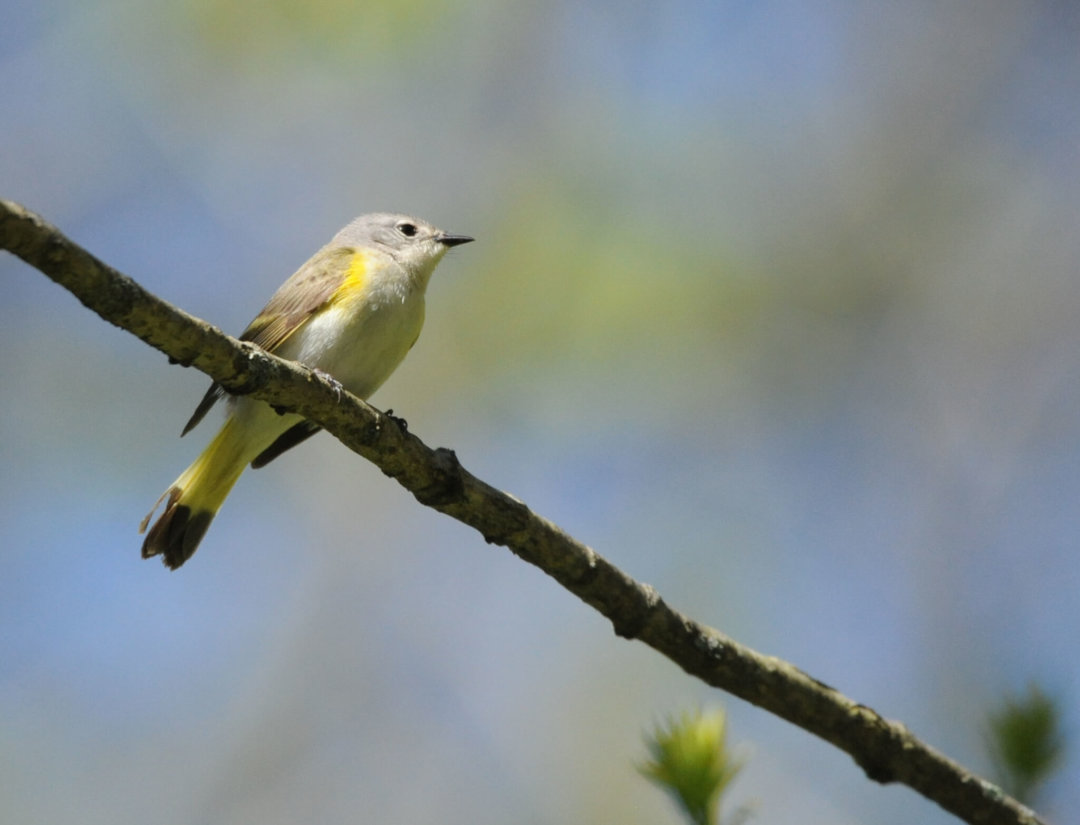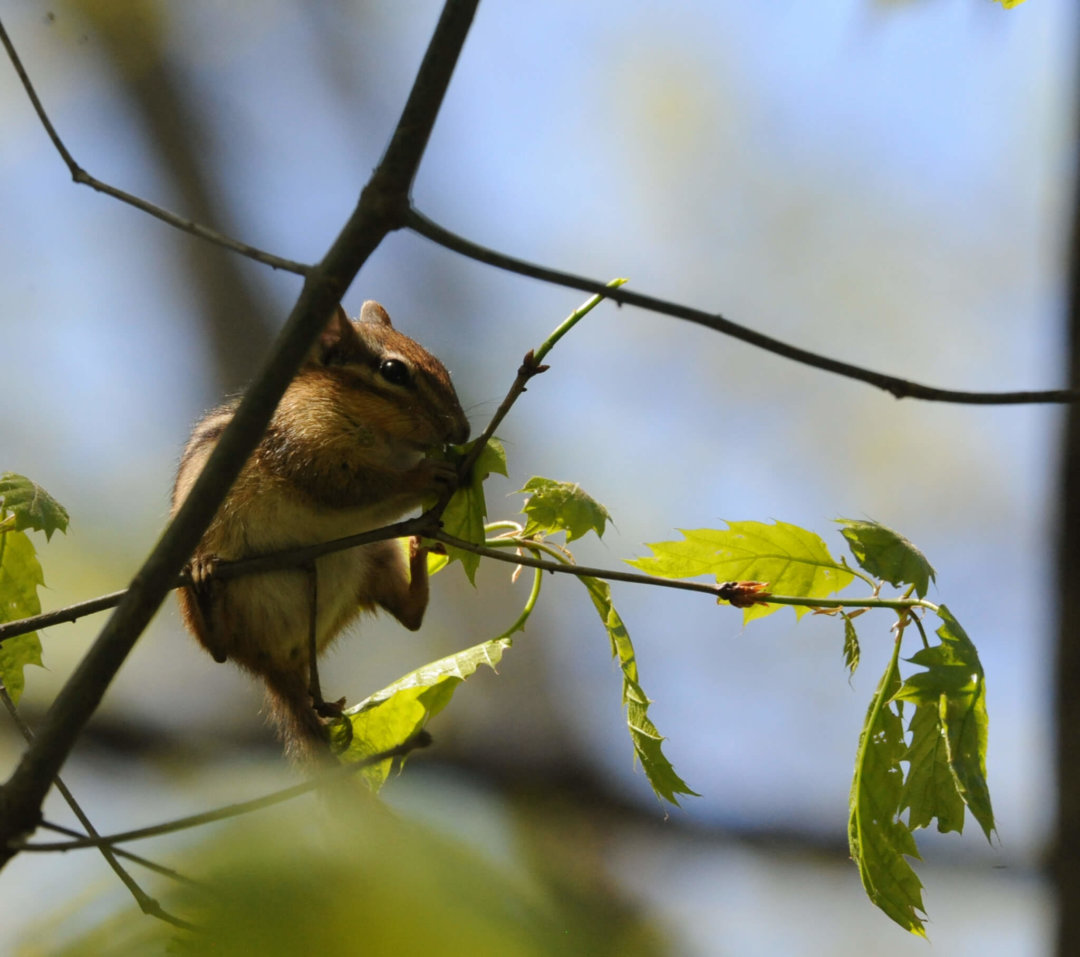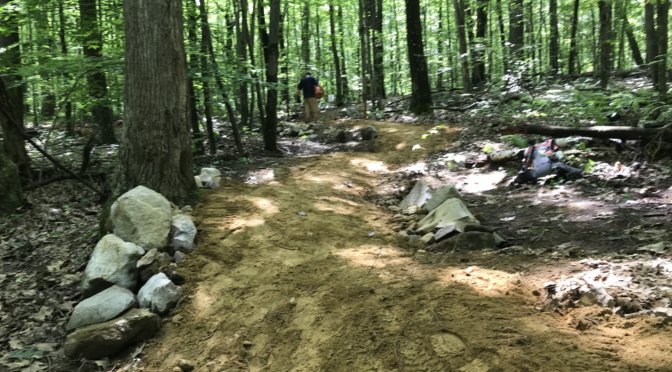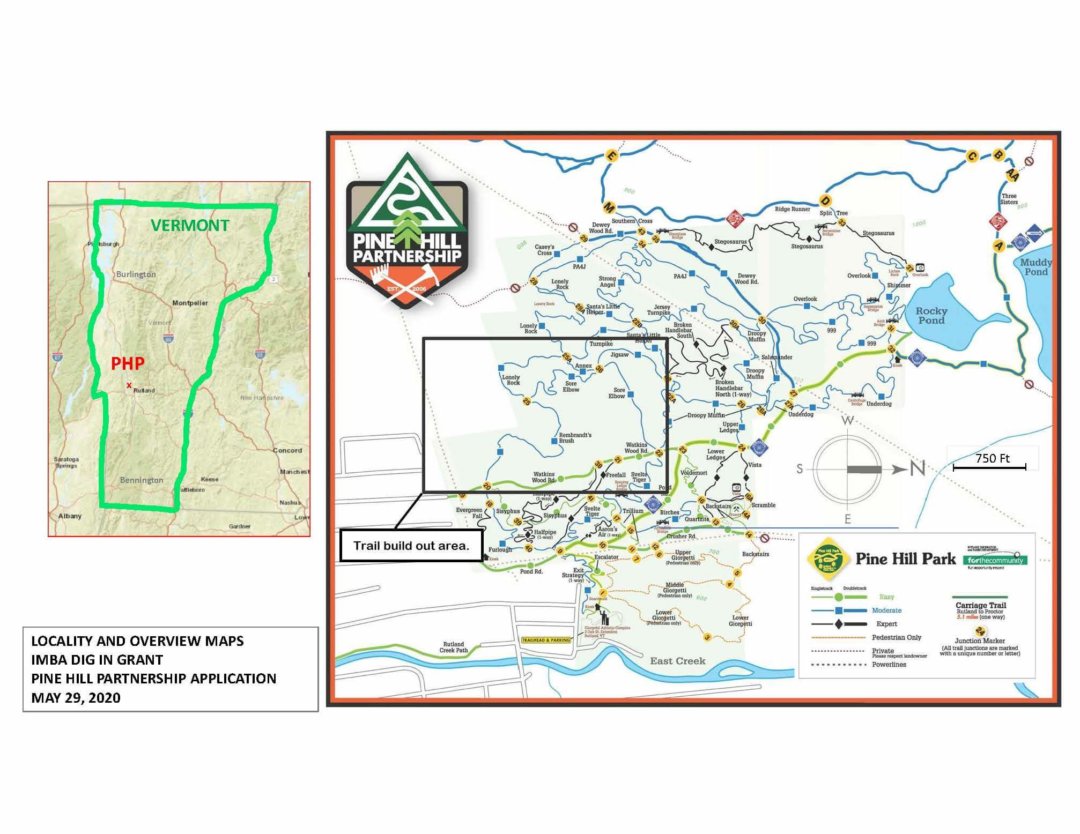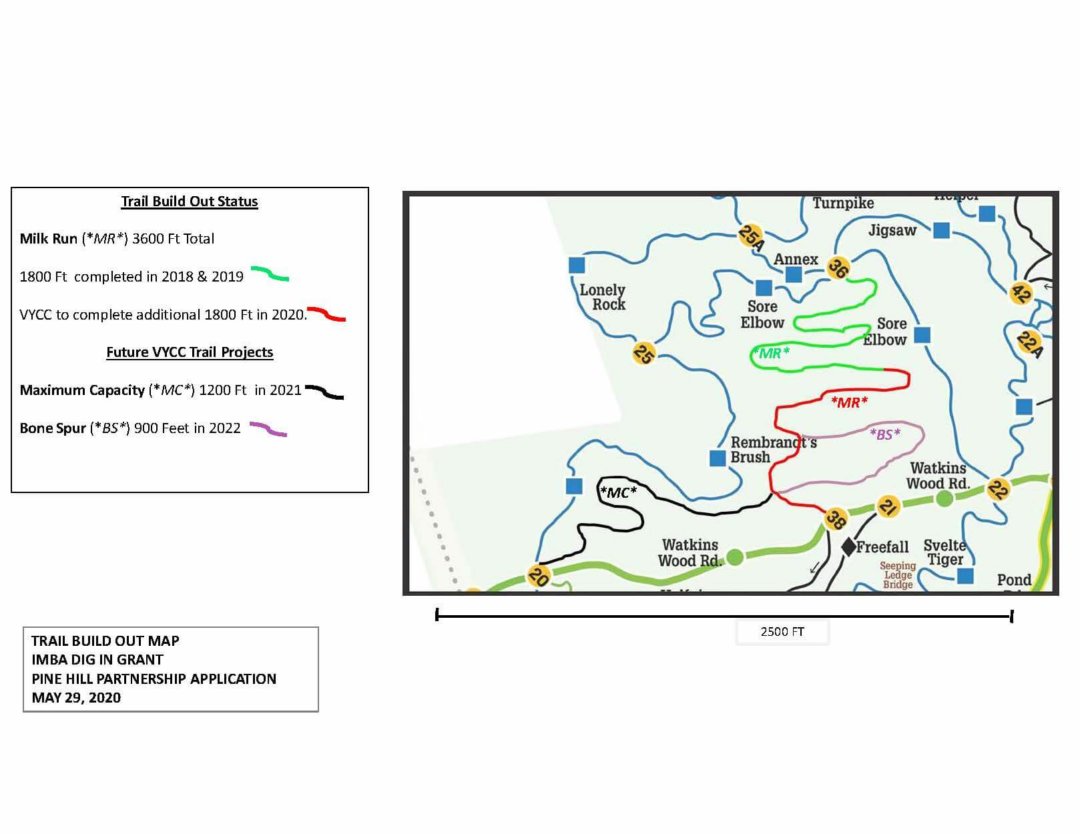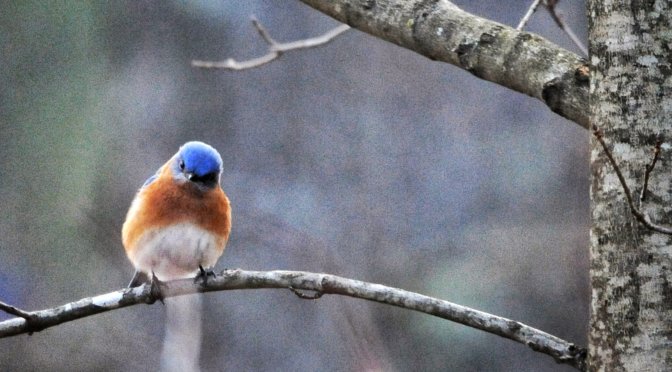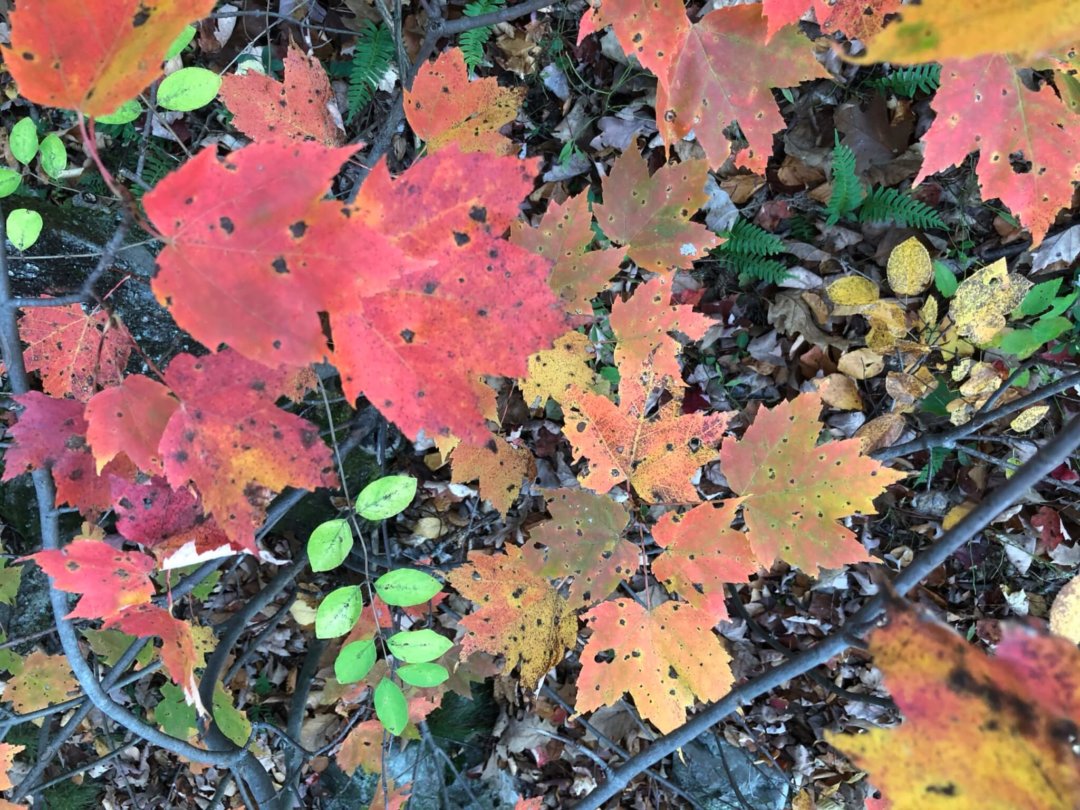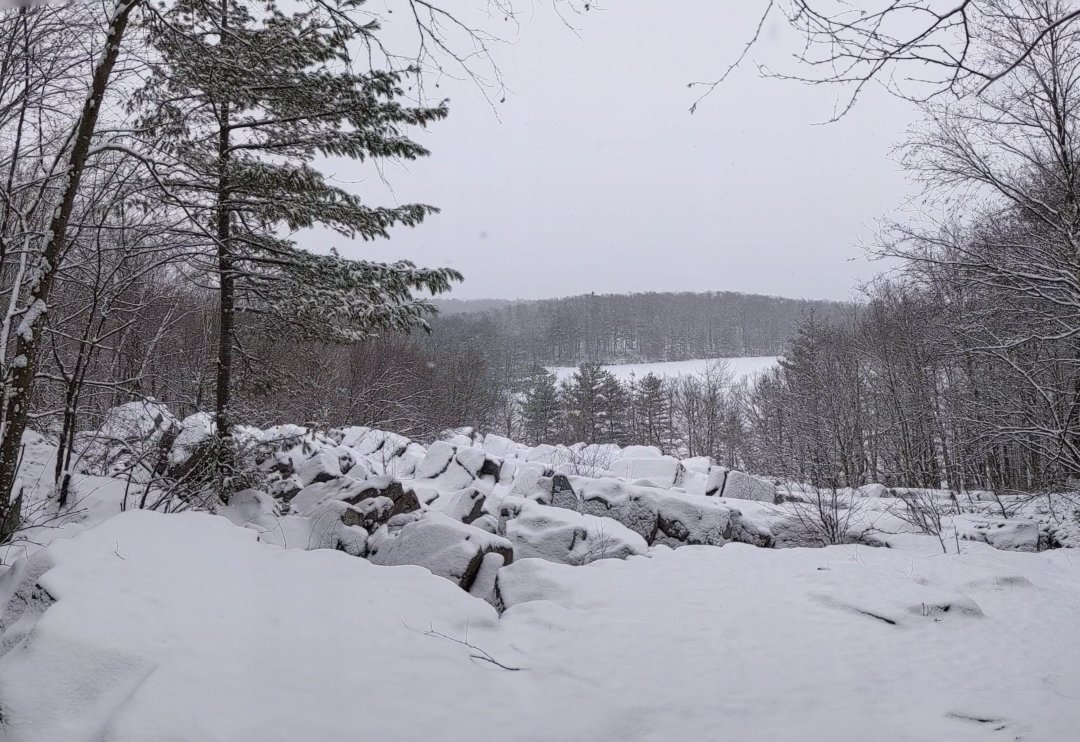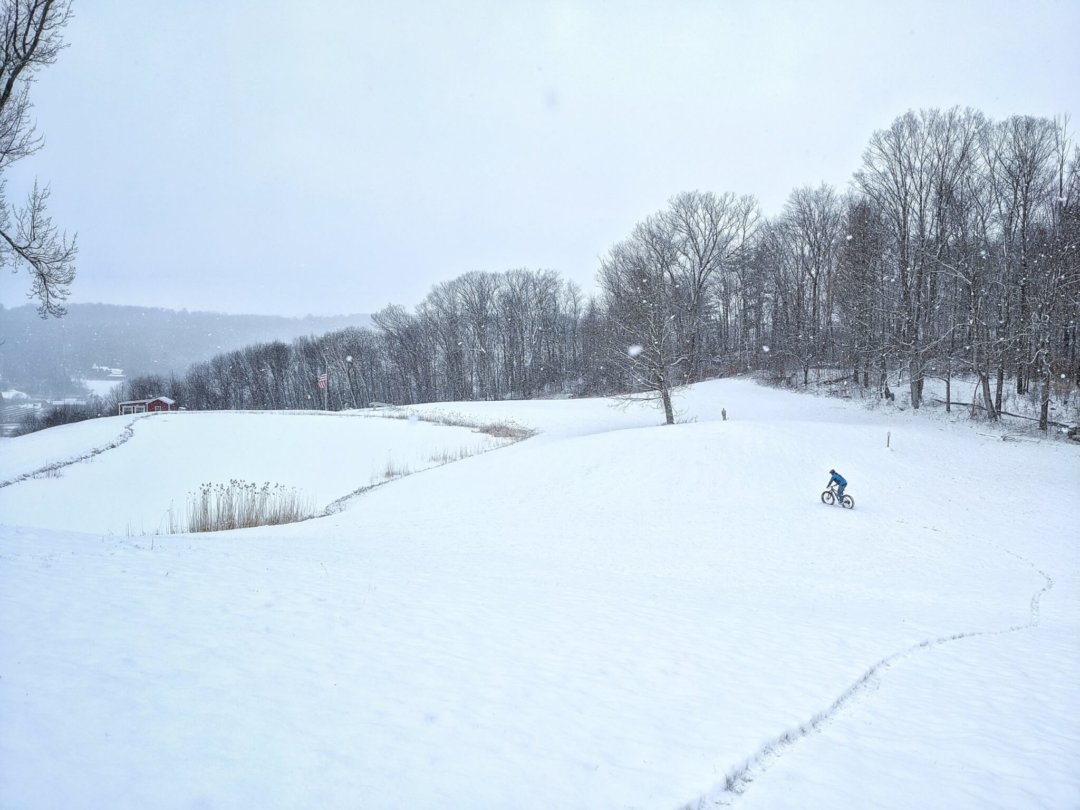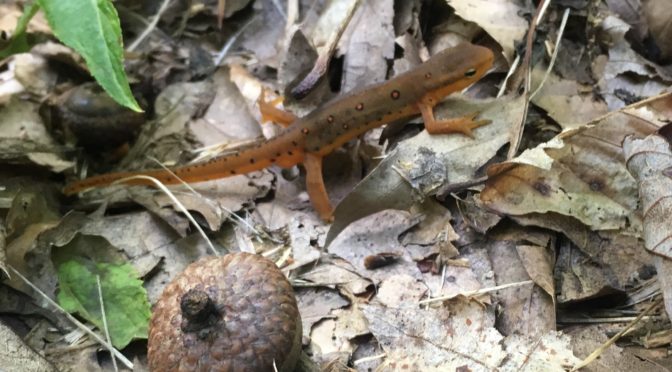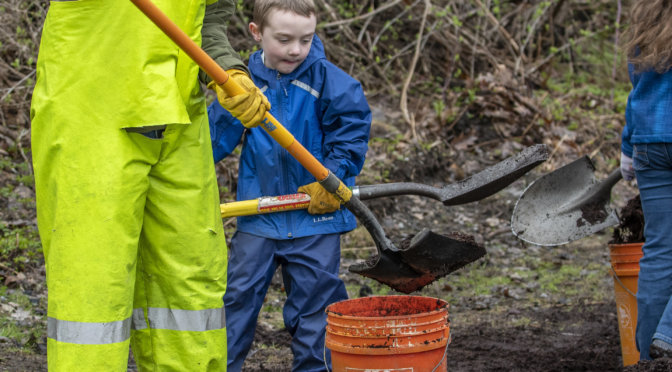Wild Times at Pine Hill Park by Tom Estill
Summer, 2019 Summary
Wild Times At Pine Hill Park
Summer, 2019 Summary
The first day of summer turned out to be a gorgeous day this year. Many birds could be found in the park including, American redstart, hairy woodpecker, black and white warbler, red-eyed vireo, hermit thrush, robin, ovenbird, immature yellow-bellied sapsucker, and great-crested flycatcher. Gray squirrels and Eastern chipmunks were a common sight.
A week later, on June 27th, I spent the day at the park clearing weeds from around the base of the 50 American chestnut trees, cutting down encroaching saplings, and spraying the leaves of the chestnuts with deer repellent. All the 50 trees are doing well, with one of them now over 10 feet tall! The big question now is, will one or more of them FLOWER next spring? Birds seen on this day included robins, scarlet tanager, hermit thrush, veery, ovenbird, red-eyed vireo, American redstart, chestnut-sided warbler, and black and white warbler. A few years ago, I would hear only one scarlet tanager singing in one place in the park, but this year, scarlet tanagers were singing on Crusher Rd., lower, middle, and upper Giorgetti trails, Carriage trail, and near Rocky Pond.
On July 2nd, the chestnut trees were watered as they always are after a dry spell. A red admiral butterfly, a not uncommon butterfly, was seen flying about. Many species of butterflies inhabit Pine Hill Park. I was particularly happy to hear from many park visitors that they had been observing more monarch butterflies in the park this season than they had in the past. Each year, local school students plant more and more milkweed in the forest in an attempt to increase the dwindling numbers of Monarch butterflies. Milkweed seeds are collected in the fall, refrigerated until spring, grown in the classroom, and then planted near Rocky Pond. The Rocky Pond milkweed population is an official Monarch Waystation. Also on this day, a young yellow-bellied sapsucker could be heard calling from its nest near Intersection 12. Yellow-bellied sapsuckers have successfully nested in that same tree, but different holes, for the last 4 years. Birds seen that day included cardinal, tufted titmouse, wood thrush, hermit thrush, scarlet tanager, great blue heron, red-eyed vireo, yellow-throated vireo, American redstart, and myrtle warbler.
On July 8th, an adult osprey was seen sitting on its nest at Muddy Pond, and an Eastern Peewee could be heard nearby. We all wondered if the adult was brooding eggs.
On July 21, an Eastern garter snake and tiny American toad toadlet were both seen on Crusher Road near the old quarry. And on July 23rd, I noticed that the forest was suddenly getting much quieter than it had been in the recent past. Also on this day I saw monarch, painted lady and great spangled fritillary butterflies flying about.
By the last week of July, the blueberries had ripened, and there were areas where the ground was covered in blueberries. Fawns could be seen walking about with their mothers, and other adults could be seen walking about by themselves looking for those blackberries and blueberries to feed upon, no doubt.
On the last day of July I took a walk through the VERY QUIET forest and saw American goldfinch, robins, red-eyed vireos, hermit thrush, crows, and great blue heron and one osprey at Muddy Pond.
The first week of August found a very quiet forest, a kingfisher at Rocky Pond, cedar waxwings nesting in pitch pine trees at the south side of Rocky Pond, and button bushes flowering along the shore of that pond. Button bush seeds are collected each fall by local school children, refrigerated during the winter, then planted in the spring along the shores of Rocky Pond in an attempt to attract more waterfowl to that pond. The seeds are eaten by waterfowl. This time of year you can still see red-eyed vireos, Eastern pewees, American goldfinch, great crested flycatcher, tufted titmouse, and yellow-bellied sapsuckers.
On August 6th, 2 young ospreys were seen in the nest, while 2 adults were flying overhead, with one of the adults holding a fish in its talons. That’s two years in a row now those ospreys have successfully raised young in their nest. On this same day, I saw my first Lichen Moth, one of the most beautiful moths I have ever seen. The contrast between the yellow and black colors of its wings was quite striking.
During a walk in late August, I heard barred owls calling near Rocky Pond and saw a double-crested cormorant flying overhead. Small wood frogs and toadlets were a common sight along the rain soaked trails.
On Sept. 8th, I took a late afternoon walk to Rocky Pond, and during that slightly over two hour walk, I didn’t see or hear a single bird. That’s the first time that has ever happened to me at Pine Hill Park.
Ospreys were seen at Muddy Pond until around the middle of Sept. when they abandoned the nest for the season. Will they return to the same nest next year? My guess is that they probably will.
The week before the fall equinox gray squirrels and chipmunks could be seen scurrying about collecting acorns and other seeds in preparation for the approaching cold weather. Though the forest was very quiet, you could still find flying about, birds such as yellowthroat, broad-winged hawk, black-capped chickadee, blue jay, song sparrow, belted kingfisher, great blue heron and wood ducks. It was nice to end the summer season with the sight of a beautiful, healthy looking red fox up near the quarries.
That’s it for this issue. Please stay on the trails and enjoy your time at the park.
Spring, 2019 Summary
At the beginning of spring, lower Giorgetti
trails were all bare ground; while throughout all the upper trails one could
still find patches of snow and ice, especially on the north facing slopes.
The last day of March found both Rocky and
Muddy ponds covered in ice with a few puddles of water dispersed throughout the
ice cover. A few Canada geese were seen
at Muddy pond and pair of mallards were seen at Rocky Pond swimming in a few
small patches of open water on the perimeter of the ponds. The only birds I saw that day were a pileated
woodpecker, crow, and the waterfowl mentioned above.
By April 7th, the snow was almost completely
gone from the park, but both ponds were still covered in ice with the exception
of a narrow band of open water around the perimeters of both ponds. I was terribly disappointed to see the old
osprey nest tree blown down by a recent storm.
Osprey had successfully nested there the last two years. Eastern newts were seen for the first time
this season, along with a few northern migrating birds including yellow-bellied
sapsucker, hermit thrush, wood ducks and osprey.
In mid-April, all signs of ground snow and ice
were gone, and ice was completely gone from both ponds. Streams were running high, red oaks were
budding, trout lily leaves were emerging from the ground cover and coltsfoot
was flowering. Water level at Rocky Pond
was so high; it was flowing over the top of all 3 beaver dams. More and more northern migrating birds were
seen each day. In mid-April you could
see Turkey Vultures flying overhead, and common mergansers at Muddy pond. Wood frogs, in large numbers, were calling
from a wet wooded area just south of Rocky Pond.
In April, Lauren White made contact with
representatives of VELCO in an attempt to get them to install an osprey
platform on a power pole they were installing at the north end of Muddy
Pond. Her efforts were successful and in
the third week of April, 2 osprey were seen building a nest on the platform, after
starting one on the top of an adjacent power pole, then leaving it.
On April 22nd, spring wildlife was out in full
force. Birds seen that day included
tufted titmouse, black-capped chickadee, yellow-bellied sapsucker, hairy
woodpecker, crow, black and white warbler, turkey vulture, mallards, Canada
geese, osprey and white-breasted nuthatches.
Spring peepers were calling, and painted turtles were sunning
themselves. Many insects were flying
about including the Mourning Cloak, the first butterfly to always appear in the
park. 2 deer ticks were found crawling
up my pant legs. I always do a thorough
job of checking for ticks after each of my walks.
By the first week of May, many flowers were
blooming including trout lily, wood anenome, white violets, trailing arbutus,
wild oats and partridge berry. A few
days later, the forest floor could be seen covered with fiddleheads, barren
strawberries, white and purple violets, jack-in-the-pulpit, coltsfoot, and
trout lilies, with Solomon’s seal starting to emerge.
In mid-May, polygala and toothwort were
flowering, and the great crested flycatcher, catbirds, and rufous-sided towhees
could be heard singing in the park. Gray
treefrogs were calling and red efts could be seen on the trails, especially
after a rain. All 50 American chestnuts
survived the winter except one. That
dead tree was replaced by an American chestnut obtained from the State of
Washington.
By the end of May, foamflower, starflower, and
pink Lady’s slipper were all flowering.
Indigo buntings were once again nesting in trees under the powerlines on
the Carriage trail, and a two-lined salamander was found under a rock.
At the beginning of June you would find false
Solomon’s Seal, Canada mayflower, smooth Solomon’s seal and pink Lady’s slippers
all flowering. New birds seen included
the yellowthroat, broad-winged hawk, Eastern peewee, and least flycatcher.
Mid-June found yellow swallowtails flying
about, Eastern chipmunks and gray squirrels scurrying about, and Osprey sitting
quietly on the nest, probably keeping 2 or 3 eggs warm.
That’s it for this issue. Enjoy your time at Pine Hill Park, and
please, remember to stay on the trails.

